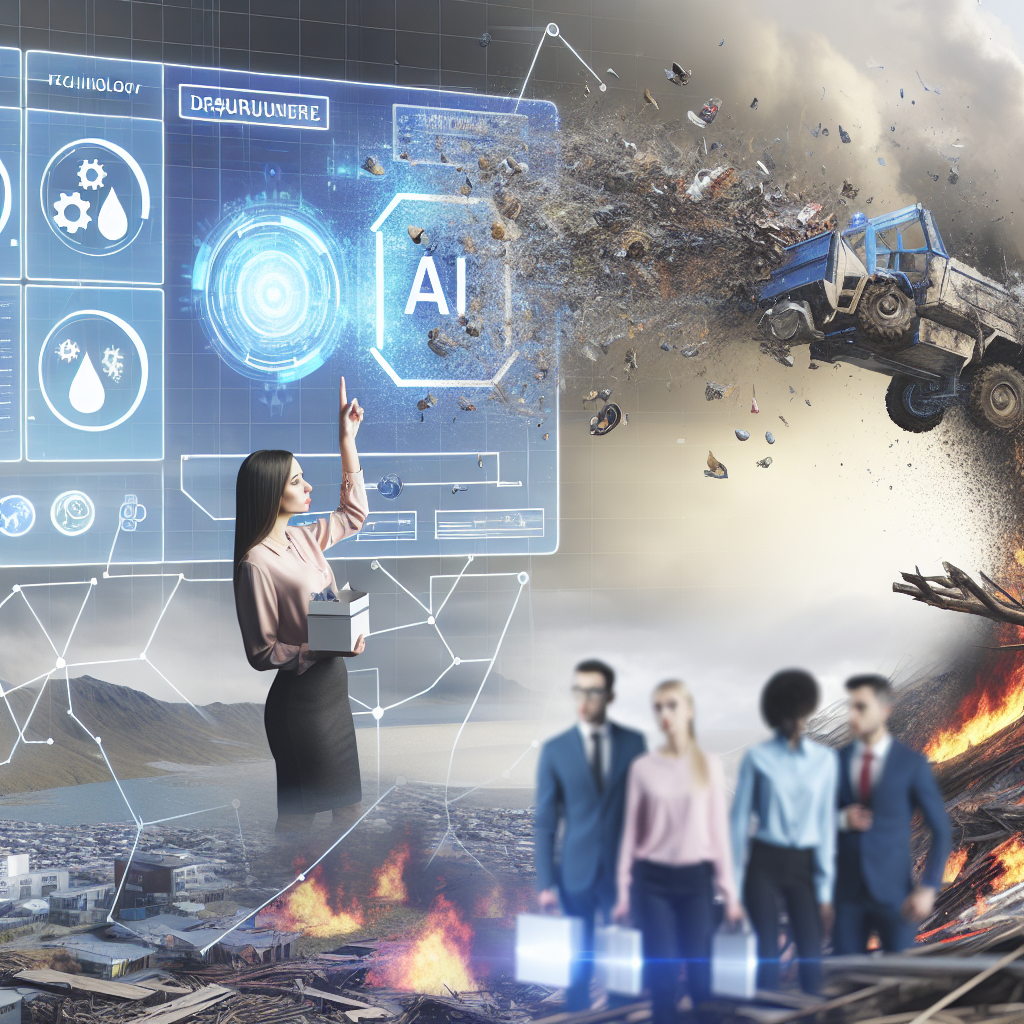-
- AI-Powered Disaster Management Systems
- Understanding AI in Disaster Management
- Configuration Steps for AI-Powered Disaster Management Systems
- Step 1: Define Objectives
- Step 2: Data Collection
- Step 3: Data Preprocessing
- Step 4: Model Selection
- Step 5: Training the Model
- Step 6: Deployment
- Step 7: Monitoring and Evaluation
- Practical Examples of AI in Disaster Management
- Example 1: Predictive Analytics for Flood Management
- Example 2: Earthquake Early Warning Systems
- Best Practices for Implementing AI-Powered Disaster Management Systems
- Case Studies and Statistics
- Conclusion
AI-Powered Disaster Management Systems

In an era where climate change and natural disasters are becoming increasingly prevalent, the need for effective disaster management systems is more critical than ever. AI-powered disaster management systems leverage advanced technologies to predict, respond to, and recover from disasters more efficiently. This guide will explore the configuration steps, practical examples, best practices, and case studies related to AI in disaster management, providing a comprehensive understanding of how these systems can be implemented effectively.
Understanding AI in Disaster Management
AI technologies, including machine learning, natural language processing, and data analytics, play a pivotal role in enhancing disaster management efforts. These systems can analyze vast amounts of data to identify patterns, predict potential disasters, and optimize response strategies. The integration of AI into disaster management not only improves response times but also saves lives and resources.
Configuration Steps for AI-Powered Disaster Management Systems
Implementing an AI-powered disaster management system involves several key steps:
Step 1: Define Objectives
- Identify the specific goals of the disaster management system.
- Determine the types of disasters to be managed (e.g., floods, earthquakes, wildfires).
Step 2: Data Collection
- Gather historical data on past disasters, including their frequency, impact, and response efforts.
- Utilize real-time data sources such as weather forecasts, seismic activity reports, and social media feeds.
Step 3: Data Preprocessing
- Clean and normalize the data to ensure consistency.
- Use techniques such as data augmentation to enhance the dataset.
Step 4: Model Selection
- Choose appropriate AI models based on the objectives (e.g., predictive modeling, classification).
- Consider using frameworks like TensorFlow or PyTorch for model development.
Step 5: Training the Model
Utilize the prepared dataset to train the selected AI model. For example:
import tensorflow as tf
# Load dataset
data = tf.keras.datasets.mnist.load_data()
# Preprocess data
x_train, y_train = data[0]
x_train = x_train / 255.0
# Build model
model = tf.keras.models.Sequential([
tf.keras.layers.Flatten(input_shape=(28, 28)),
tf.keras.layers.Dense(128, activation='relu'),
tf.keras.layers.Dense(10, activation='softmax')
])
# Compile model
model.compile(optimizer='adam', loss='sparse_categorical_crossentropy', metrics=['accuracy'])
# Train model
model.fit(x_train, y_train, epochs=5)Step 6: Deployment
- Deploy the trained model into a production environment.
- Integrate the system with existing disaster management frameworks.
Step 7: Monitoring and Evaluation
- Continuously monitor the system’s performance and accuracy.
- Gather feedback from users and stakeholders to improve the system.
Practical Examples of AI in Disaster Management
Several organizations have successfully implemented AI-powered disaster management systems:
Example 1: Predictive Analytics for Flood Management
The National Oceanic and Atmospheric Administration (NOAA) uses AI algorithms to analyze weather patterns and predict flooding events. By integrating machine learning models with real-time data, NOAA can issue timely warnings, allowing communities to prepare and evacuate if necessary.
Example 2: Earthquake Early Warning Systems
In Japan, the Earthquake Early Warning (EEW) system utilizes AI to analyze seismic data and provide alerts seconds before an earthquake strikes. This system has been credited with saving lives by giving people crucial seconds to take cover.
Best Practices for Implementing AI-Powered Disaster Management Systems
- Ensure data quality and integrity by regularly updating datasets.
- Involve stakeholders in the design and implementation process to address community needs.
- Conduct regular training sessions for users to familiarize them with the system.
- Implement robust security measures to protect sensitive data.
Case Studies and Statistics
According to a report by the United Nations, AI technologies can reduce disaster response times by up to 30%. A case study from the World Bank highlighted that AI-driven models in disaster-prone regions led to a 20% increase in the efficiency of resource allocation during emergencies.
Conclusion
AI-powered disaster management systems represent a significant advancement in how we prepare for, respond to, and recover from disasters. By following the outlined configuration steps, leveraging practical examples, and adhering to best practices, organizations can enhance their disaster management capabilities. As climate-related challenges continue to grow, the integration of AI into disaster management will be crucial for saving lives and minimizing economic impacts.